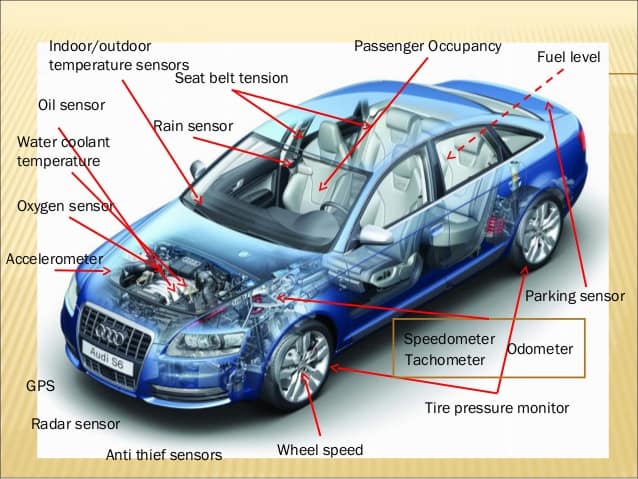The rapid development of automobiles drives the continuous increase in the types of sensor applications. With the rapid development of automotive electronics, automation, and networking, automotive sensors are facing a period of rapid development opportunities.
Sensors are the core components of automotive electronic control systems, and are widely used in automotive power, drive, and safety systems. Sensors can actually control information such as location, temperature, humidity, images, acceleration, and electromagnetics in real time and accurately. The more the automobile develops in the direction of automation and electronics, the higher the demand for sensors is. At the same time, the increase in the amount of data will also increase the demand for storage quantity and capacity, which will directly promote the accelerated development of automotive sensor products.
The following is an introduction to which sensor technologies will be used in new cars.

1. Air flow sensor
Air flow sensor is one of the basic sensors used in automobiles. This sensor is located inside the car's engine and can be controlled by the ECU. It calculates the air density in the engine. If this sensor stops working, the vehicle will not be able to drive normally. Also, fuel economy will be worse.
2. Engine speed sensor
An engine speed sensor in a car can be attached to the crankshaft. The main purpose of this sensor is to monitor the rotational speed of the crankshaft so that fuel injection and engine timing can be controlled. So this part is very important for safe driving.
3. Oxygen sensor
The location of the oxygen sensor is usually close to the exhaust manifold and after the catalytic converter. The function of this part is to monitor the oxygen content in the exhaust gas and to detect whether the air-fuel ratio of the engine is normal. The on-board computer uses this information to determine fuel economy to control emissions.
4. Knock sensor
The knock sensor is used to ensure that the fuel burns smoothly and will detect knocking. Sometimes minor knocking is not a big problem, but it can cause damage to the car engine, such as damage to rings, head gaskets and rod bearings. Installing these parts can be costly. So this sensor is used to solve a specific fault that occurs in the engine of the car.
5. Coolant sensor
The coolant sensor is one of the most important sensors in your car. Because the computer relies on data from sensors to control all functions. Typically, this sensor can be attached on the board. If a sensor fails, there will be an indication of a stall, such as poor fuel mileage, etc. Therefore, the state of the sensor should be checked for defects. If it was damaged, that would be a problem.
6. Intake manifold absolute pressure sensor
The main function of the intake manifold absolute pressure sensor in the car is to monitor the load on the engine. Mostly it measures the difference between manifold pressures. This can be received by the car from external pressure to ensure that the car engine can consume fuel according to the change in pressure.
7. Fuel temperature sensor
The fuel sensor is used to continuously detect the fuel temperature to judge whether the fuel utilization rate is optimal. If the engine fuel is cold, it will take a long time to burn due to its high density. Likewise, if the temperature is higher, then the time required for combustion will be reduced. Abnormal combustion can damage other parts of the car. This sensor will monitor the fuel being injected at the correct speed and temperature for the car's engine to work properly.
8. Voltage sensor
A voltage sensor is a type of sensor used in automobiles. The main function of this sensor is to manage the speed of the car and ensure that the speed is increased (or decreased) as required. So it is essential in the car.
9. Vehicle speed sensor
As the name suggests, this sensor is used to detect the speed of the car and reflect the value in the tachometer. This enables the driver to intuitively obtain the speed of the vehicle and adjust it in time to achieve safe driving and avoid danger.



























